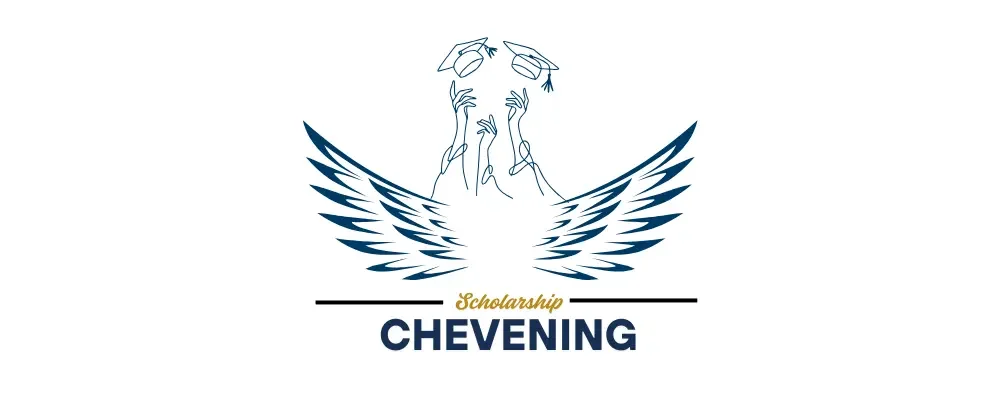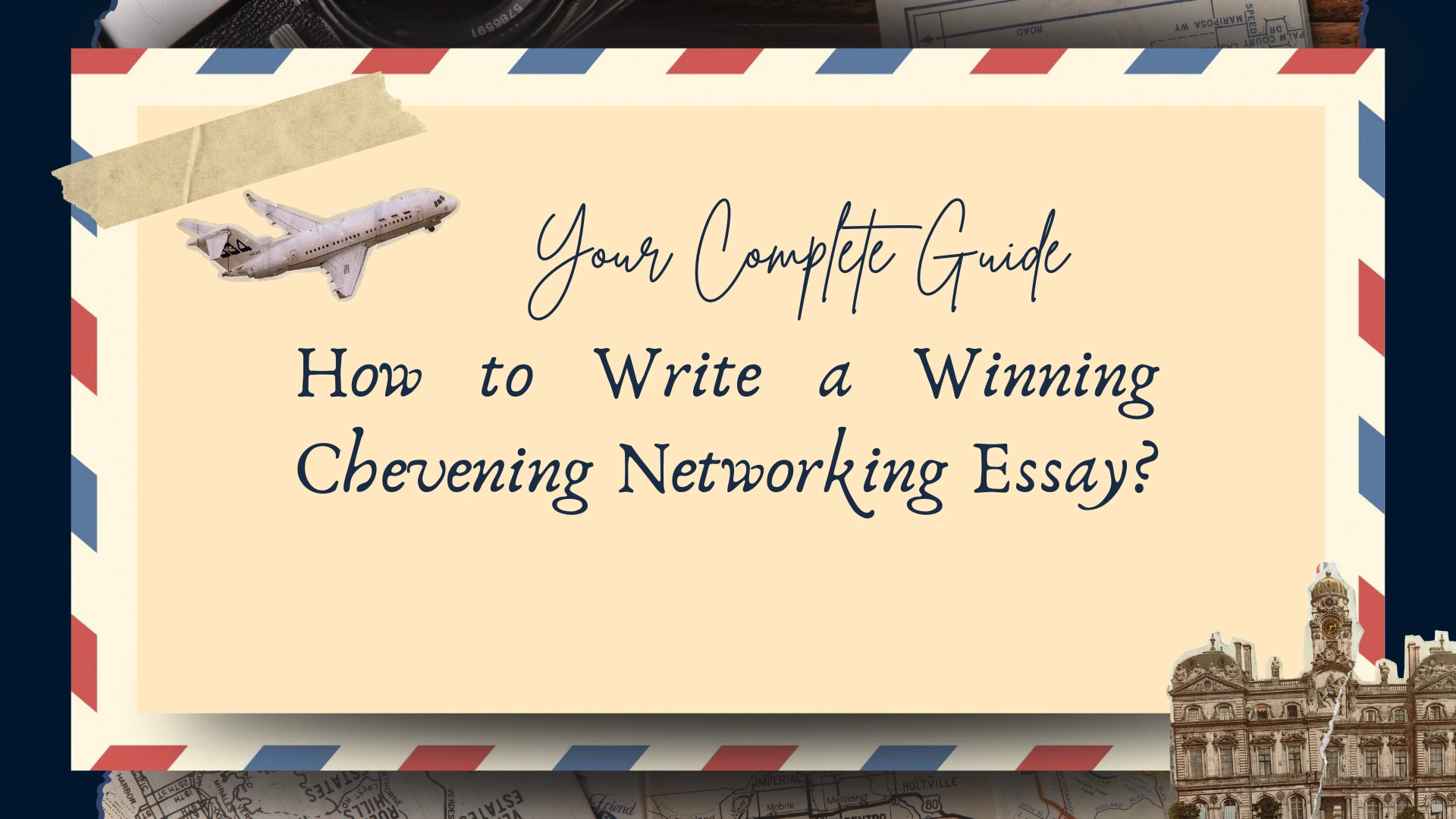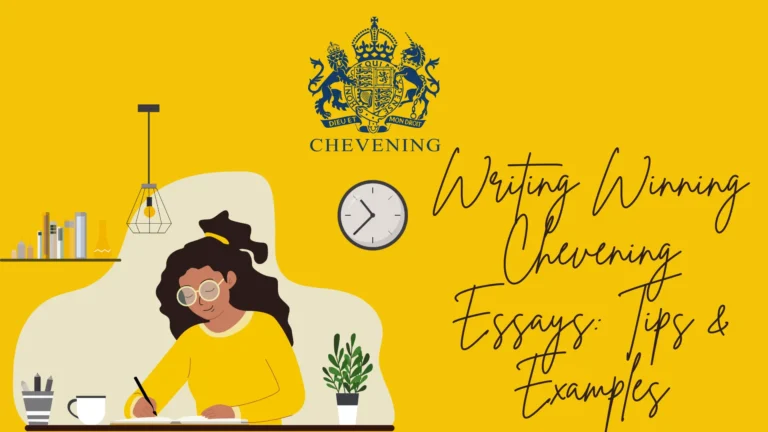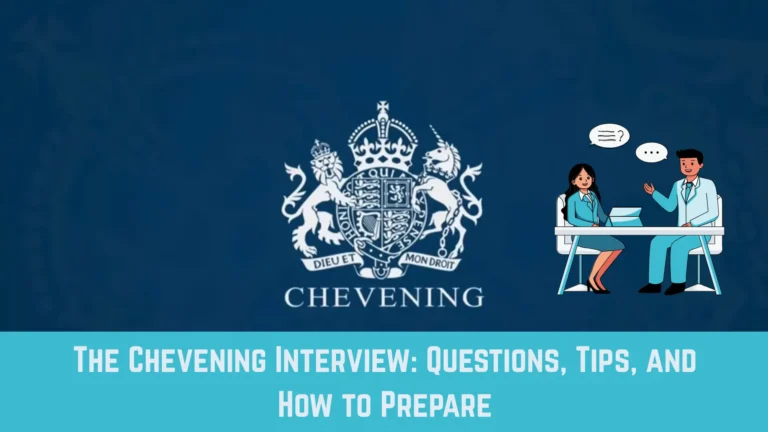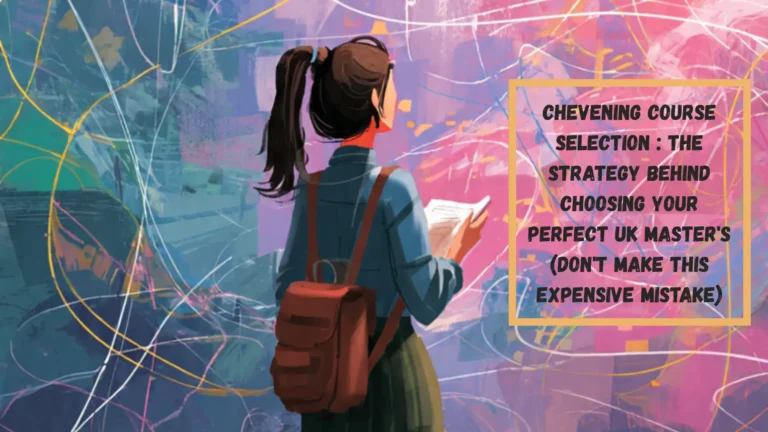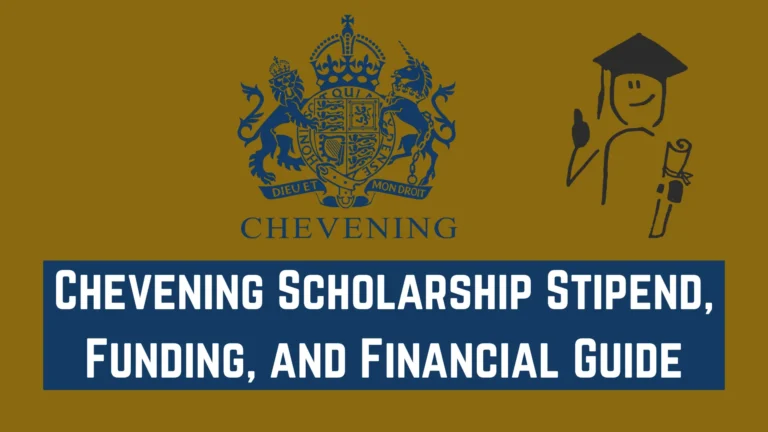How to Write a Winning Chevening Networking Essay: Your Complete Guide
Look, I’ll be honest with you. When I first heard about the Chevening Networking Essay, I thought, “How hard can it be to write about meeting people?” Turns out, pretty hard. This isn’t just about listing every person you’ve ever exchanged business cards with at a conference. It’s about showing the Chevening selection committee that you genuinely understand what networking means—and more importantly, that you know how to do it well.
So grab a cup of tea (or coffee, I don’t judge), and let’s walk through this together. I’m going to break down everything you need to know about writing a Chevening Networking Essay that actually stands out, without sounding like a robot or a shameless name-dropper.
What Exactly Is the Chevening Networking Essay, Anyway?
Before we dive into the how, let’s talk about the what. The Chevening Networking Essay is one of the four required essays in your Chevening Scholarship application. It’s your chance to demonstrate that you’re not just academically brilliant or professionally accomplished—you’re also someone who knows how to build and maintain meaningful professional relationships.
The Chevening program isn’t just throwing money at talented individuals for fun. They’re investing in future leaders who will create positive change in their home countries. And here’s the thing: no one changes the world alone. You need connections, collaborations, and a network of people who believe in your vision.
The essay typically asks you to: Explain how you build and maintain professional relationships, provide specific examples of your networking activities, and describe how these connections will help you achieve your career goals and contribute to your home country’s development.
Why Does This Essay Matter So Much?
Think about it from Chevening’s perspective for a second. They’re not just funding your education—they’re adding you to a global network of over 50,000 alumni across 160 countries. That’s massive. They want to know you’ll be an active, engaged member of this community, not someone who takes the scholarship and disappears into the sunset.
Your networking essay shows them you understand the value of relationships, you know how to nurture them, and you’re genuinely interested in being part of something bigger than yourself.
Understanding the Word Limit (Yes, It Matters)
Let’s get practical. Your Chevening Networking Essay should be between 100 and 500 words. I know, I know—that feels both generous and restrictive at the same time. You’ve got enough space to tell a compelling story, but not enough to ramble on about every coffee meeting you’ve ever had.
Here’s my advice: aim for around 450-480 words. This gives you breathing room to make your points without seeming like you’re desperately trying to hit the maximum. Quality over quantity, always.
The Structure That Actually Works
Forget the boring five-paragraph essay structure you learned in school. Your Chevening Networking Essay needs to flow naturally while hitting all the right points. Here’s what’s worked for successful applicants:
Opening Hook (50-75 words): Start with a specific moment that illustrates your networking philosophy. Maybe it’s that time you connected two colleagues from different industries and they ended up collaborating on a groundbreaking project. Or perhaps it’s a lesson you learned early in your career about the power of genuine relationships.
Your Networking Philosophy (75-100 words): This is where you briefly articulate what networking means to you. And please, please don’t say “networking is important for career development.” That’s like saying water is wet. Be specific. Is networking about mutual growth? Knowledge exchange? Building communities of practice? Show them you’ve actually thought about this.
Concrete Examples (200-250 words): This is the meat of your essay. Share 2-3 specific examples that demonstrate your networking abilities. These should be varied—maybe one about building relationships in your professional field, another about cross-cultural networking, and a third about maintaining long-term connections.
Future Impact (75-100 words): Connect your past networking experiences to your future goals. How will your networking skills help you achieve your career objectives? How will you contribute to the Chevening network? What specific connections do you plan to build during your time in the UK?
Brief Conclusion (25-50 words): Tie it all together with a forward-looking statement that reinforces your commitment to meaningful networking.
What Makes a Networking Experience Worth Mentioning?
Not all networking stories are created equal. You want examples that show depth, strategy, and genuine relationship-building. Here’s what works:
Strong examples include:
- Initiating and maintaining a professional mentorship relationship
- Creating or leading a professional organization or community
- Facilitating connections between people in your network that led to tangible outcomes
- Building relationships across cultural or sectoral boundaries
- Maintaining long-distance professional relationships effectively
- Using networking to solve specific problems or create opportunities
Weak examples include:
- Simply attending conferences or events
- Having a large number of LinkedIn connections
- Casual interactions without follow-through
- Networking solely for personal gain
- Name-dropping without context or outcomes
The Art of Showing, Not Telling
This is where most essays fall flat. Anyone can write “I am an excellent networker with strong interpersonal skills.” Yawn. Show me instead.
Instead of: “I have excellent networking skills that have helped me throughout my career.”
Try: “When I learned that a local NGO was struggling to access government funding for their education program, I connected their director with a ministry official I’d met at a policy workshop six months earlier. That introduction led to a partnership that’s now providing literacy training to 500 children annually.”
See the difference? The second version is specific, demonstrates impact, and shows that your networking creates real value for others—not just yourself.
Chevening Scholarship FAQS : Complete Questions & Answers Guide
Common Mistakes That Kill Your Essay (And How to Avoid Them)
Let me save you from some painful rejections. Here are the mistakes I see repeatedly:
Mistake #1: The Humble Brag Hurricane
Yes, you need to showcase your networking achievements, but there’s a fine line between confidence and arrogance. If your essay reads like you’re the most connected person since LinkedIn was invented, tone it down. Focus on mutual benefit and genuine relationships, not just what you gained.
Mistake #2: The Conference Attendance List
“I attended the Global Leadership Summit, the Asia-Pacific Development Forum, and the International Youth Conference…” Stop. Attendance isn’t networking. What did you do at these events? Who did you connect with? What happened afterward?
Mistake #3: The Vague Future Promise
“I plan to network extensively during my time in the UK” tells them nothing. Be specific. Which professional associations will you join? What kinds of connections are you hoping to make? How exactly will you contribute to the Chevening community?
Mistake #4: Forgetting the “Maintaining” Part
Networking isn’t just about making new connections—it’s about nurturing existing ones. Don’t forget to mention how you maintain relationships over time. Do you have a system for staying in touch? Regular check-ins? Shared projects?
Mistake #5: The Social Media Flex
Having 10,000 Twitter followers or 5,000 LinkedIn connections doesn’t automatically make you a great networker. Digital presence can be part of your networking strategy, but it needs context and must demonstrate meaningful engagement, not just numbers.
Personal Stories: Your Secret Weapon
Here’s something that separates good essays from great ones: authentic personal stories. The selection committee reads hundreds of applications. They can spot generic, polished-to-death narratives from a mile away.
What makes them sit up and pay attention? Real moments. Human connections. Stories that could only have happened to you.
Maybe you’re a doctor who started a WhatsApp group for medical professionals in rural areas that now has 200 members sharing knowledge and resources. Perhaps you’re an engineer who maintained a relationship with a professor from a conference, and that connection eventually led to a research collaboration. Or you might be a teacher who created a cross-school network of educators experimenting with innovative teaching methods.
These stories work because they’re specific, they show initiative, and they demonstrate that your networking creates value beyond your own career advancement.
The Ultimate Guide to Fully Funded Masters Programs in the UK
The Introduction That Hooks Them
Your opening lines are crucial. You’ve got maybe 10 seconds to make the reader want to keep going. Here are some approaches that work:
The Specific Moment: “The coffee had gone cold by the time we realized we’d been talking for three hours. What started as a brief introduction at a policy workshop had evolved into a partnership that would eventually impact education policy across three provinces.”
The Unexpected Connection: “I never expected that helping a fellow passenger with their luggage at Heathrow would lead to a mentorship that shaped my entire career trajectory.”
The Defining Lesson: “I learned the true meaning of networking the day I realized it wasn’t about collecting business cards—it was about planting gardens you might not harvest yourself.”
See how each of these creates curiosity and tells you something about the writer’s networking philosophy?
Connecting Everything to Your Future Goals
Here’s where you bring it home. Your networking experiences shouldn’t exist in isolation—they need to clearly connect to where you’re going.
Think about:
- How will your existing network support your post-Chevening goals?
- What specific connections do you hope to make in the UK?
- How will you contribute to the Chevening alumni network after your scholarship?
- What role will networking play in achieving your long-term career objectives?
Be concrete. Instead of “I will leverage my UK education to build international partnerships,” try something like “Through my studies at [University], I plan to connect with researchers working on renewable energy policy, building relationships that will inform my work establishing sustainable energy frameworks in [home country].”
The Do’s and Don’ts Checklist
DO:
- Use specific names, organizations, and outcomes (while respecting privacy)
- Demonstrate reciprocity—show what you give, not just what you get
- Highlight diversity in your networking (different sectors, cultures, career stages)
- Show how you maintain relationships over time
- Connect your networking to broader impact, not just personal gain
- Use active voice and vivid language
- Proofread obsessively
DON’T:
- List every event you’ve ever attended
- Exaggerate or fabricate connections
- Focus solely on high-profile contacts
- Forget to explain the “so what” of your networking activities
- Use clichés like “people person” or “excellent communicator”
- Make it all about what you gained
- Submit without getting feedback from others
How to Make Your Essay Memorable
You’re competing with thousands of other talented applicants. How do you make your networking essay stick in the reader’s mind?
Show your unique approach: Maybe you use a specific framework for networking, or you have an unusual method for staying in touch. Perhaps you’ve created something innovative—a platform, a community, a regular meetup—that demonstrates your networking initiative.
Highlight unexpected connections: The most interesting networking stories often involve unlikely partnerships. The engineer and the artist. The government official and the startup founder. These cross-pollination moments show creative thinking.
Demonstrate cultural awareness: If you’ve successfully networked across different cultures (which is especially relevant for an international scholarship), highlight this. What did you learn? How did you adapt your approach?
Show evolution: How has your networking approach changed over time? What mistakes did you learn from? Growth narratives are compelling.
Proofreading and Polish: The Final Steps
You’ve written your essay. Great! Now comes the part nobody enjoys but everyone needs: revision.
First, step away from it. Seriously, leave it alone for at least 24 hours. You need fresh eyes.
Then, read it aloud. If you stumble over sentences or lose interest in your own story, that’s a problem. Your essay should flow naturally and maintain engagement from start to finish.
Get feedback from at least three people:
- Someone who knows you well (they’ll catch inconsistencies or missed opportunities)
- Someone familiar with the Chevening process (they’ll spot strategic weaknesses)
- Someone who’s a strong writer but doesn’t know you (they’ll give you honest feedback on clarity and impact)
Check for:
- Word count (stay within limits)
- Specific examples vs. vague claims
- Active voice (stronger than passive)
- Varied sentence structure
- Clear connection between networking and goals
- Spelling and grammar (obviously)
- Consistent tone throughout
What Happens After You Submit?
Here’s the truth: you might write a brilliant networking essay and still not get selected. The Chevening Scholarship is incredibly competitive. But here’s what I can promise you—the process of reflecting on your networking experiences, articulating your philosophy, and connecting it to your future goals is valuable regardless of the outcome.
And if you do get that scholarship? Your networking skills will be even more crucial in the UK. You’ll be meeting scholars from around the world, connecting with academics and professionals in your field, and building relationships that could last a lifetime.
Final Thoughts
Writing the Chevening Networking Essay isn’t about proving you’re the world’s greatest networker. It’s about showing you understand that meaningful relationships are built on mutual respect, genuine interest, and sustained effort. It’s about demonstrating that you see networking not as a transactional activity but as a fundamental part of how you create impact in the world.
Your essay should leave the reader thinking, “This is someone who would be a valuable addition to our community. This is someone who gets it.”
So take your time. Be thoughtful. Be honest. Tell stories that only you can tell. And remember—the best networking essay isn’t the one with the most impressive connections. It’s the one that shows the most authentic understanding of what it means to build relationships that matter.
Now, go write something that makes them want to meet you.
Need more help? Check the official Chevening website for updated essay questions, review sample essays from successful applicants (while being careful not to copy their style), and don’t hesitate to reach out to Chevening alumni for advice. They were once in your shoes, and most are happy to help.
Good luck. You’ve got this.
